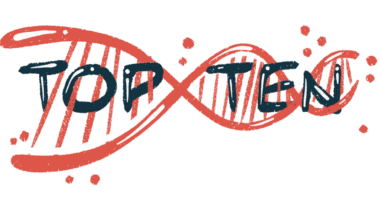Nuclear Receptor REV-ERB May be Targeted to Improve Muscle Tissue Regeneration Mechanism, Study Finds

Researchers at Saint Louis University found that a nuclear receptor called REV-ERB is an important regulator of different steps in the process of muscle cell regeneration.
According to the study “Rev-Erb co-regulates muscle regeneration via tethered interaction with the NF-Y cistrome,” which was featured in the journal Molecular Metabolism, development of new drugs that could specifically target this receptor may be an attractive way to treat several muscle disorders, including muscular dystrophy.
“Identifying new means of accelerating muscle regeneration has proved a daunting challenge,” Thomas Burris, PhD, chair of pharmacology and physiology at Saint Louis University, said in a press release.
“Therefore understanding the underlying mechanisms that regulate muscle cell regeneration and coordinate regenerative repair could provide future therapeutic options for stymieing the loss of muscle function in the traumatically injured,” Burris added.
Skeletal muscles have a great regeneration capacity. Because they are essential for locomotion, postural support, and breathing, these muscles rapidly begin a damage control response upon injury. However, in situations of chronic illnesses or traumatic injury, the muscle regeneration process may not be able to overcome excessive loss of skeletal muscle mass.
The medicines available to help in such conditions often fail in improving the muscles’ regeneration rate in the long-term and are associated with severe adverse effects, reducing even more the patient’s quality of life.
The muscles’ cell regeneration process can be simplistically defined in two phases: A first step when the muscle cell progenitors called myoblasts proliferate, and a second step when myoblasts mature to form muscle tissue.
In this study, the authors found that REV-ERB has important roles in the different stages of muscle tissue development. Taking advantage of animal models they genetically manipulated not to express the REV-ERB receptor and comparing them with animals normally expressing the receptor, the researchers could identify REV-ERB’s role in the muscle cell regeneration mechanism.
REV-ERB levels decreased before myoblasts’ maturation, but increased when this differentiation stage took place. Its activity was shown to be essential for the regulation of normal mitochondrial and metabolic function of more mature muscle cells.
“REV-ERB is an interesting nuclear receptor that helps coordinate our metabolism with our daily routine,” said Colin Flaveny, PhD, assistant professor of pharmacology and physiology at Saint Louis University.
“We’re studying the protein to see if turning its activity up or down can influence the way muscle regenerates after injury or illness,” Flaveny added.
In addition, the research team demonstrated that pharmacological regulation of the receptor’s activity would impact on muscle differentiation and could be used to stimulate muscle regeneration.
“We demonstrate that REV-ERB can stimulate muscle regeneration upon acute muscle injury in an animal model,” Burris said.
“Our findings reveal that REV-ERB may be a potent therapeutic target for the treatment of a myriad of muscular disorders,” he added.






